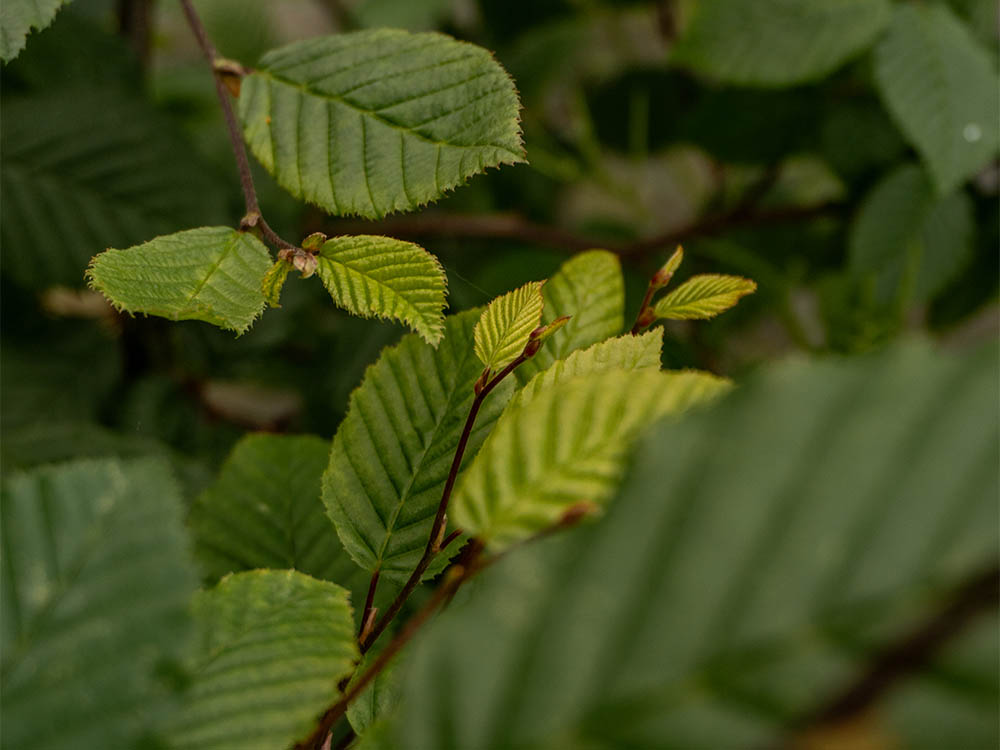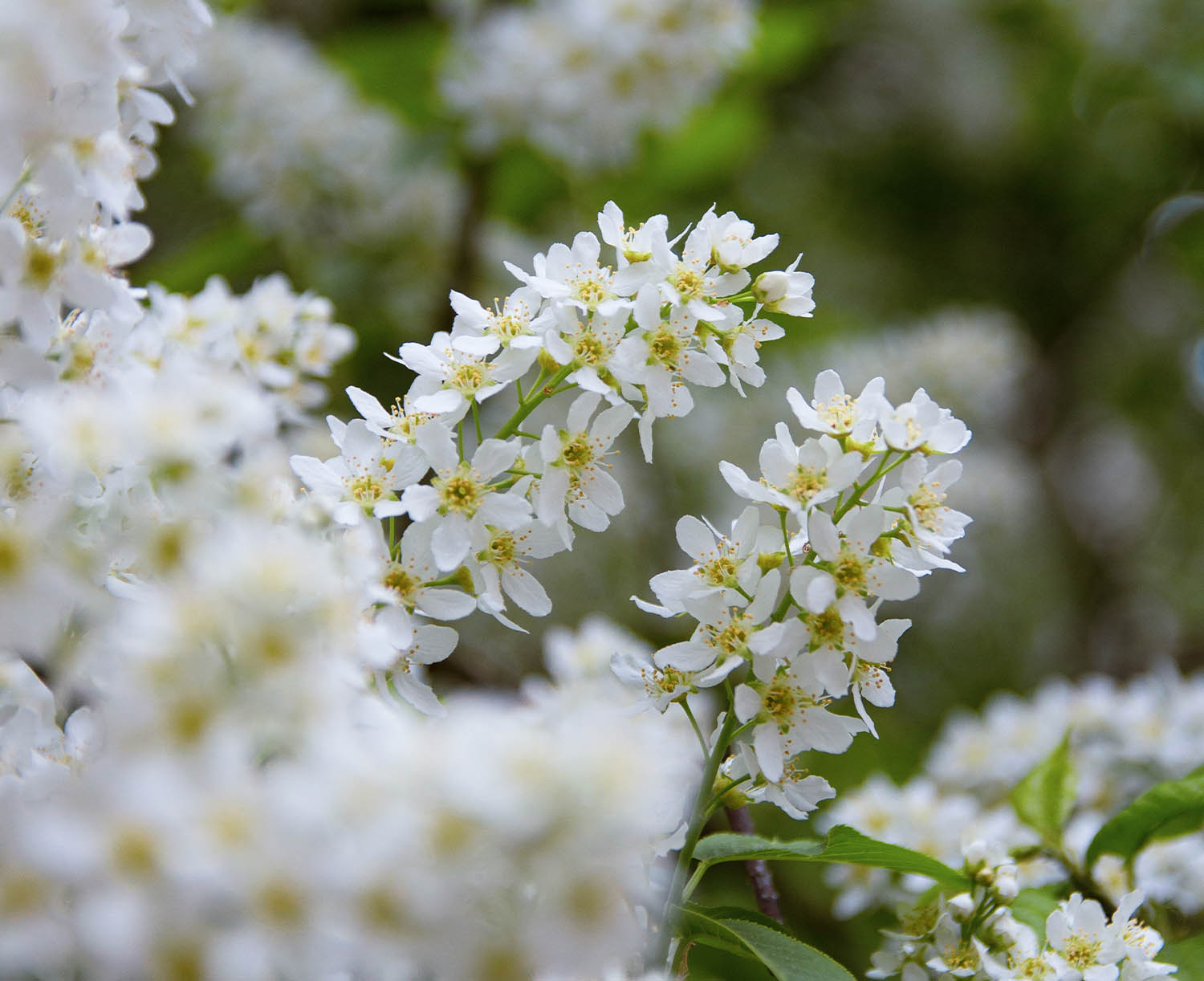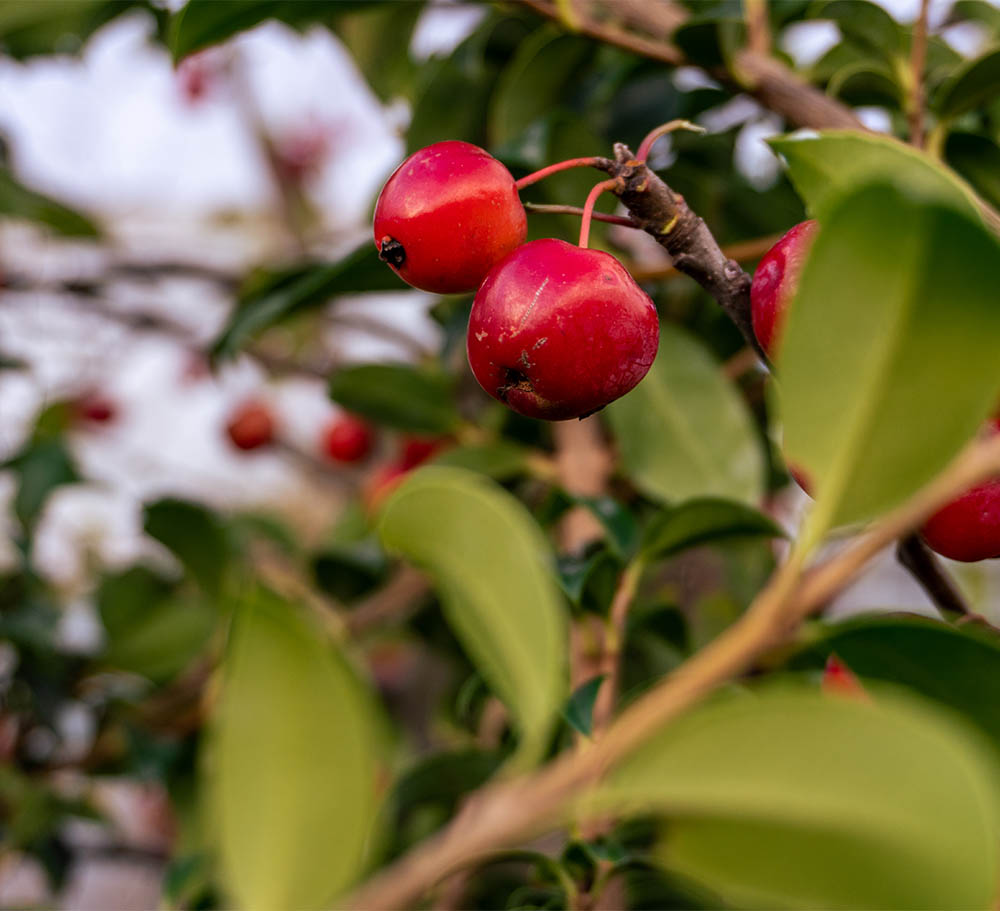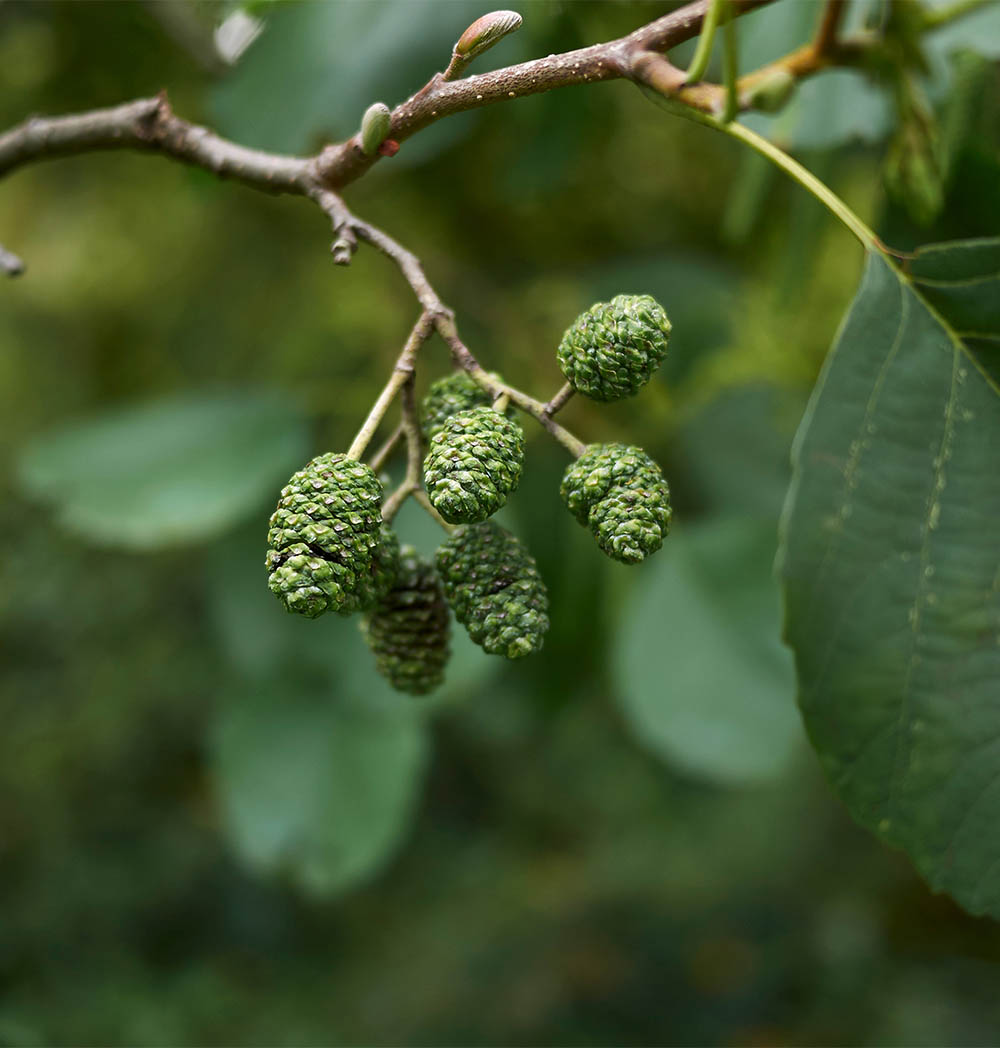Trees for urban areas
The vital role of trees in city environments and selecting appropriately for your needs.
In urban landscapes, surrounded by asphalt roads and concrete buildings, plants and trees are fundamental in promoting sustainable and healthy urban communities. Their importance has been confirmed by numerous studies that highlight the benefits that different tree species offer in reducing the challenges of a pollutant-filled urban environment. For instance, in 2020, air pollution removal services provided by nature led to an estimated 2,001 deaths being avoided and prevented 49,126 life years being lost, according to data from the UK Office for National Statistics (ONS) available here.
One of the most crucial aspects of trees in urban areas is their ability to absorb carbon dioxide (CO2) from the air and release oxygen. This exchange, which is a byproduct of photosynthesis, helps mitigate greenhouse gas levels in the atmosphere. It improves air quality, reduces air pollution and protecting public health. Additionally, In a world increasingly affected by heat waves, trees play a fundamental role in counteracting the urban heat island effect, a symptom of urbanised areas, where on average they experience much warmer temperatures compared to rural areas. Through transpiration, trees release water vapour into the surrounding air, creating a natural cooling effect that helps mitigate high temperatures in dense urban areas.
Cities are not only habitats for humans, but also for a wide range of flora and fauna. Trees also provide shelter, food and nesting sites for a variety of plant and animal species, contributing to promoting urban biodiversity and creating more resilient ecosystems. Their fronds provide shelter for birds, while their trunks and branches create habitat for insects, squirrels and other small mammals. These urban micro-habitats serve as sustenance points for local fauna, promoting biological diversity in urbanised areas. Developing green spaces in cities can help mitigate the effects of natural disasters, such as floods and droughts, by absorbing and redistributing rainwater, stabilising soil and reducing erosion. Trees contribute significantly to this balance, providing a network of roots that holds soil and absorbs excess water. If you want to know more about the topic of biodiversity and solutions to mitigate water runoff in urban areas, read our blogs “Planting for Biodiversity” and “Understanding Sustainable Drainage systems (SuDS)”.
Despite their many benefits, trees face significant challenges when planted in urban areas, including air pollution, environmental degradation, disease and urban development pressures. However, there are solutions to protect and promote the health of urban trees, including sustainable urban planning, stormwater management and adopting tree care practices. Resilient urban planning is essential to ensure sufficient living space for trees to grow and survive, and for the local communities to benefit from them. Integration of green corridors, urban parks and open spaces give local residents green amenities to enjoy, and help with habitat diversification, which in turn promotes the health and biodiversity of trees. Green engineering projects, such as green roofs and green walls, offer innovative solutions to increase green cover in densely populated urban areas.
Did you know?
In the city centre of Milan, Italy, there is an architectural work that combines nature and urbanisation: the Vertical Forest (Bosco Verticale). It is a one-of-a-kind architectural work, consisting of two residential towers covered in thousands of plants and trees. This ambitious project, designed by architect Stefano Boeri, not only offers an extraordinary visual spectacle amongst the skyline of Milan, but also represents an innovative example of sustainable design. The Vertical Forest promotes biodiversity and air quality, and also brings the residents closer to nature, providing many health benefits, and creating a sustainable between the urban and green environment.
In today’s society, where sustainability and urban resilience are major talking points, trees in urban area are vital in combatting climate change and in promoting the health and well-being of urban communities. Investing in urban greenery contributes to environmental responsibility, and serves as an investment in the future of our cities and the planet as a whole.

Which trees to choose for urban areas
Trees play a fundamental role in the urban environment, offering numerous aesthetic, environmental and social benefits. However, the selection of trees for different urban areas requires careful evaluation of their characteristics and their impacts on the surrounding environment.
Below are our picks for the best trees for public areas, private gardens and street trees, assessing their various characteristics and preferences for healthy growth.

Carpinus betulus
Parks and public areas
In parks and public areas, trees must be resilient and adaptable to withstand urban conditions. Species such as maple and basswood are excellent choices. These trees offer large canopies that provide shade and shelter, promoting urban biodiversity. Additionally, they are tolerant to air pollution and stressful urban conditions, contributing to air quality and temperature mitigation. It is essential to select tree species suitable for the urban context, considering factors such as adaptability to environmental conditions, disease resistance and ease of maintenance. Native species, that have evolved with the local climate are often preferable, as they require fewer water resources and are more resilient to urban conditions. Additionally, they’re best suited to attracting native wildlife, more efficiently encouraging biodiversity.
Below we selected two species that are part of our G Range, particularly suitable for planting in public green areas:
Acer campestre ‘Elsrijk’
Acer campestre ‘Elsrijk’ is a medium sized, upright deciduous tree with a conical-shaped crown. It has three lobed, dark green leaves which transition to a lovely butterscotch yellow in autumn. In late spring, Acer campestre ‘Elsrijk’ blooms small, green flowers which later develop into winged fruits. Its conical shape makes it great for street or urban planting.
Acer campestre ‘Elsrijk’ is suitable for planting in urban public green spaces for many reasons: tolerance to urban conditions, moderately compact size, non-invasive root system and attractive aesthetics.
Carpinus betulus
Carpinus betulus is a native, slow growing deciduous tree with oval-shaped, serrated foliage which turns yellow or orange in autumn. In early spring, Carpinus betulus produces green male and female catkins, and the female catkins are followed by heart-shaped fruits. It is great for growing as hedging or a specimen plant. As per the Acer campestre, Carpinus betulus is known for its tolerance of urban conditions, including air pollution and urban soil; tends to maintain moderate dimensions, with compact growth and uniform foliage and usually has a non-invasive root system.
House gardens
When selecting trees in private gardens, it’s important to consider size, maintenance and environmental impacts. Trees such as ornamental cherry, flowering apple, and viburnum add aesthetic interest with vibrant blooms and decorative foliage. They can also attract wildlife, contributing to local biodiversity. When choosing trees for your garden, it is better to choose trees with a less invasive root system to avoid structural issues. Some species, such as weeping willow and poplar, have shallow, aggressive roots that can damage underground pipes and home foundations. alternatively, trees such as cypress, with a vertical and minimally invasive root system, are preferred for their adaptability characteristics and lower impact on the surrounding infrastructure. Cypresses are often planted in cemeteries due to their vertical and shallow roots. Choosing trees with an appropriate root system is essential to ensure the safety and stability of urban infrastructure, helping to create more resilient and sustainable urban environments.
Below are trees from our G Range, which are particularly suitable for house gardens:

Prunus avium
Prunus avium
This medium sized deciduous tree has chestnut bark that takes on a silver hue as it matures. Clusters of pure white, cup-shaped flowers bloom in spring, and once these are pollinated, red-purple cherries appear in summer. Its toothed foliage emerges green and turns orange-red during autumn.
Prunus avium can be an excellent choice for your home garden, but there are some considerations to keep in mind. This tree can grow significantly over time, developing a large canopy and reaching considerable heights. It is therefore important to ensure that you have enough space in the garden for the tree to grow without interfering with other surrounding structures or plants.
Prunus avium prefers well-drained, fertile soil, so it’s important to make sure the soil in your garden meets these needs to promote the tree’s growth and health. This species also prefers sunny or partially shaded positions, so it is necessary to ensure that the garden receives enough sunlight to allow the wild cherry tree to grow and produce abundant fruit. As with all fruit trees, the wild cherry tree requires a certain amount of maintenance. This includes regular pruning to maintain the plant’s shape and health, as well as protection from pests and diseases. Making sure you give the necessary time and attention to caring for your tree will ensure optimal growth and abundant fruit production.
Malus ‘Evereste’
Malus ‘Evereste’ is a small deciduous tree with a conical shape. It is a popular and suitable choice for home garden for several reasons. This ornamental apple tree variety tends to maintain a moderate size, with compact growth and a uniform canopy, making it ideal for normal-sized gardens where space may be limited. Furthermore, ‘Evereste’ flowers spectacularly in spring, with pink flowers that stand out exceptionally against the dark green foliage. In addition to its floral beauty, this variety produces small red fruits that add visual interest to the garden in autumn. Although they are not suitable for human consumption, these fruits are appealing wild birds, encouraging wildlife into the green space. Like many ornamental fruit plants, ‘Evereste’ can provide habitat and food for insects and wild birds. Incorporating this variety into your garden will not only add visual interest, but will also help support the local ecosystem.
The ornamental apple tree ‘Evereste’ is generally hardy to urban conditions and requires minimal maintenance once established in the garden. This makes it a practical choice for those who want to add beauty and interest to their garden without a lot of subsequent effort.

Malus ‘Evereste’
Street trees
Street trees face unique challenges, including traffic pollution, limited space and interference with infrastructure. Roadside trees play a very important role in regulating the urban microclimate. Through a process called “evapotranspiration”, the leaves release water vapour into the environment, lowering the air temperature by up to one degree (1.5 meters above the ground). This phenomenon is more common in deciduous broad-leaved trees, which have wider leaf blades and are therefore more capable of carrying out this energy exchange. A tree-lined street will therefore be cooler and capable of mitigating the heat compared to an avenue without it.
The trees to choose must be small or medium sized, with non-invasive roots and compact vertical growth. Species such as maple and basswood are ideal options. We have selected two G Range trees below, which are perfect for planting along roads:
Tilia cordata ‘Greenspire’
Tilia cordata ‘Greenspire’ is an upright, vigorous deciduous tree with dark green, heart-shaped leaves and fragrant, pale yellow flowers from July which are attractive to bees. Small, nut-like fruits appear in late summer. With its upright branches, Tilia cordata ‘Greenspire’ is great for planting as avenues.
Tilia cordata ‘Greenspire’ is a highly regarded choice for street trees, offering a number of benefits that make it ideal for this purpose. This variety tends to maintain a moderate size, with compact growth and a wide canopy, making it perfect for planting along roads without interfering with electrical wires or overhead communication lines. Tilia varieties are renowned for their resistance to air pollution and urban conditions, helping to improve air quality and the city environment.
Although Tilia trees can develop extensive root systems, the ‘Greenspire’ variety tends to have less invasive roots, reducing the risk of damaging sidewalks or other infrastructure. This aspect is fundamental to guarantee the safety and integrity of urban structures.
In addition to its practical functionality, the ‘Greenspire’ is also praised for its aesthetics. Its smaller leaves and uniform, compact shape help improve the appearance of streets and urban areas, adding green appeal to the city environment.

Alnus glutinosa
Alnus glutinosa
Alnus glutinosa is a large, deciduous, broadly conical tree with dark bark and light brown branches. Alnus glutinosa has rounded, dark green leaves with serrated edges. It has grey-purple, cone-like buds all year round and young catkins from late winter. It can cope well with coastal locations and also works well when grown as hedging.
Alnus glutinosa is a tree species that can be considered for street trees in certain situations, although it may not be the ideal choice in all urban settings. Tolerance to air pollutants is a well-known characteristic of Alnus glutinosa, making it an appropriate choice for streets and urban areas prone to pollution. Additionally, this species is adapted to moist soils and can tolerate occasional flooding, making it an appropriate choice for areas with poor drainage or wet soils along roads. It should be noted that Alnus glutinosa can reach considerable sizes, with a wide crown. This may require regular pruning to avoid interference with overhead wires or other structures. Carefully considering the mature size of the tree is essential to ensuring the safety and integrity of urban infrastructure. The deep and stable root system of Alnus glutinosa can contribute to soil stability along roads. However, it is important to consider that this root system could become problematic in areas with delicate underground infrastructure such as water or gas pipes, as the roots can be invasive.
Selecting trees for urban areas requires careful consideration of the specific needs in each context. Opting for robust, adaptable and sustainable trees promotes a greener, healthier and more welcoming urban environment for residents and wildlife. Investing in trees suited to the urban context is an important step towards creating more sustainable and resilient communities.
To find out more about the pollution tolerant trees we supply, speak to the G team today.

